Review of the WD Red SN700 M.2 NVMe SSD for NAS Drives
Why should you put the WD Red SN700 SSD in your NAS? It’s a fair question. Western Digital (WD) has been in the SSD market for quite a few years now, with a lot of in-house R&D at their disposal and their past consolidation with Sandisk resulting in some generally impressive Solid State drives from the brand available to home/business users. One big plus to the WD range of SSD media (and indeed hard drive media) is their rather easy to follow colour coding system on their portfolio, with SSD/HDDs for NAS/SMB server use being branded with the ‘WD Red’ title. Although the WD Red range of NAS hard drives has been around for a long time and is available in numerous forms (RED, Red Pro, Red Plus), their SSD series has been a little more gradual in its release strategy, with their WD Red SA500 NAS SSD (in SATA 2.5″ and SATA M.2) being the only real move from them. That is of course until now, with their new M.2 NVMe SSD for NAS/Server use, the WD Red SN700. With more and more NAS server systems (both desktop and rackmount) arriving on the scene with dedicated M.2 NVMe SSD slots (first real example as earlier as 2017/18 with the DS918+), WD has really taken their time of producing a dedicated NVMe SSD for NAS users. So, what is it that makes the WD Red SN700 SSD stand out? What makes it NAS/Server optimised and ultimately in our SN700 review we want to figure out if it deserves your cache*?
*I’ll get my coat….
WD Red SN700 SSD Review – Quick Conclusion
There is a lot to like about the WD Red SN700 SSD. For a start, this is clearly one of the highest endurance SSDs available in their current home/SMB lineup of drives at 0.7-1.0DWPD (capacity dependant) and if you are looking for an SSD for your Synology or QNAP system as an area of write-enabled cache (or Read/Write), then you are definitely going to feel better about that lifespan. Equally, I like that WD has gone into this with a broad range of capacities to complement the varying degrees of storage potential in the average user (even 2-Bay NAS like the DS720+ or TS-251D have PCIe/M.2 expandability available by default), from as little as 250GB and all the way up to 4TB on that petite little M.2! Even when we pushed the drive in both standalone benchmarks in our test machine and in both Synology/QNAP NAS usage for caching and storage pools, the drive maintained expected performance and higher in every test. In direct comparison with it’s most comparable PCIe3 drive from competitor Seagate, the Ironwolf 510 SSD for NAS, the WD Red SN700 is a clearly higher-performing drive in read, write, durability and 4K IOPS (though the Ironwolf does have an inclusive 3-year data recovery services – a bit questionable in utility for cache recovery though). I do question the somewhat delayed arrival of a PCIe Gen 3×4 SSD for NAS as the move towards PCIe Gen 4 in NAS is starting in development, as well as the price point of this drive for NAS seemingly ignoring this transition. But if you are looking to add cache to your NAS in 2021 (as well as scaling up random performance or your storage pools in an older system), then the WD Red SN700 SSD is a solid choice and does exactly the things they claim.
WD Red SN700 SSD Review – Retail Packaging
The box the WD Red SN700 SSD arrives in is exactly what you would expect., with ‘RED’ appearing throughout. as well as performance benchmarks and ratings ion show. WD absolutely NAILED IT when they introduced the colour coding system on their SSDs (IMO). Storage media is by no means an exciting or sexy subject, no matter how hard I try to make it so, with inscrutable model IDs, differences often distinguished by as little as 1-2 characters in the product number and little clarity of what makes a drive more suitable than another for purpose. So when WD introduced the Colour system for their drives, with Blue for home/basic, Black for Gamer/Pro, Green for energy-efficient, Purple for surveillance, Gold for Data Center and finally Red for NAS server use, it went an enormous way to clarify what was the ideally SSD/HDD for your the device they were going in. Your cutlery drawer has ALOT of knives inside, but have you ever tried cutting a steak with a butter knife, or spreading butter with a machete (I hope not)? Having the RIGHT tool for the job is often the first big choice you will make and Therefore you can understand why WD want to shout loud and proud about the Red SN700 SSD being NAS optimized
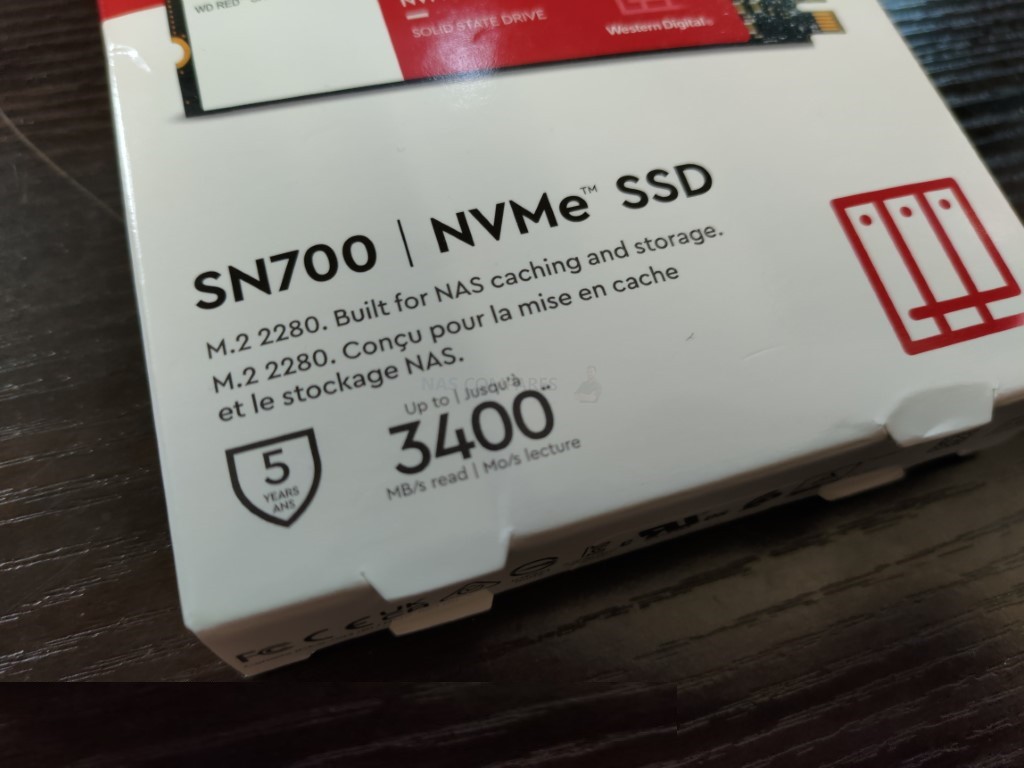
Like most M2 NVMe SSDs, the contents are rather low key. Unlike 2.5″ SSDs, NVMe SSDs are a great deal more barebones (given the different client hardware deployment options from tower case with active cooling, to compact NAS enclosures with modest airflow and rackmounts with enormous fan assembly). Therefore, perhaps to avoid waster, the inside of the retail box, you find the WD SN700 SSD held in a plastic outer casing.
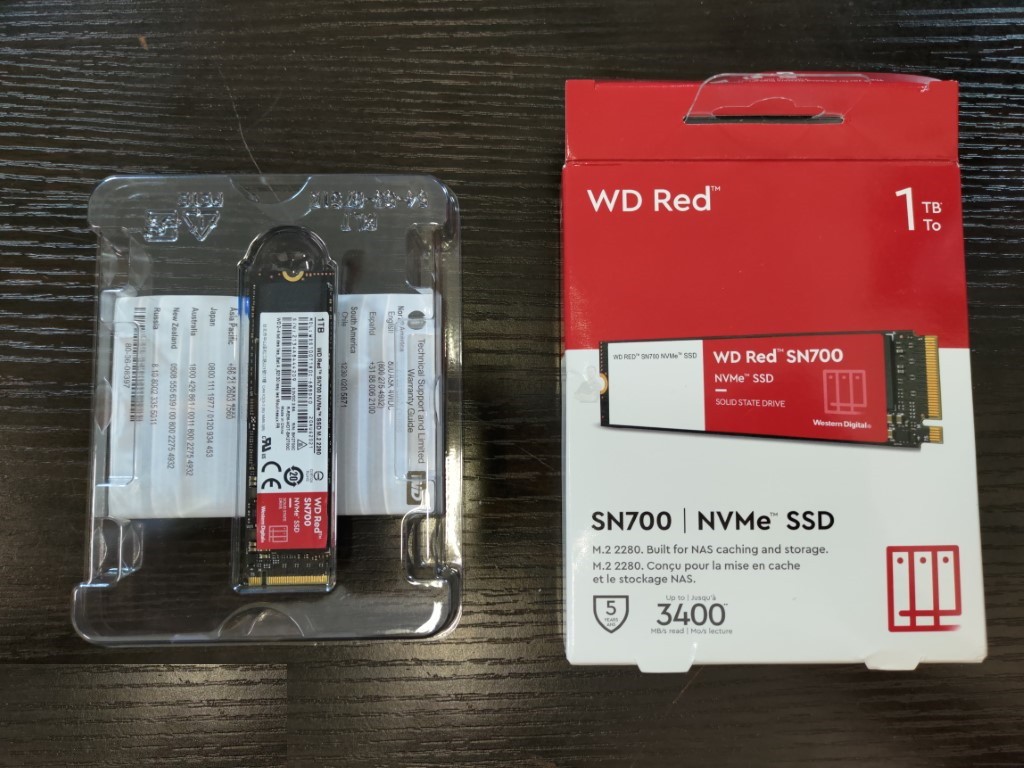
You also find a guide to your 5 year warranty and a small amount of information about general installation recommendations, but that is about it. Here is the complete contents:
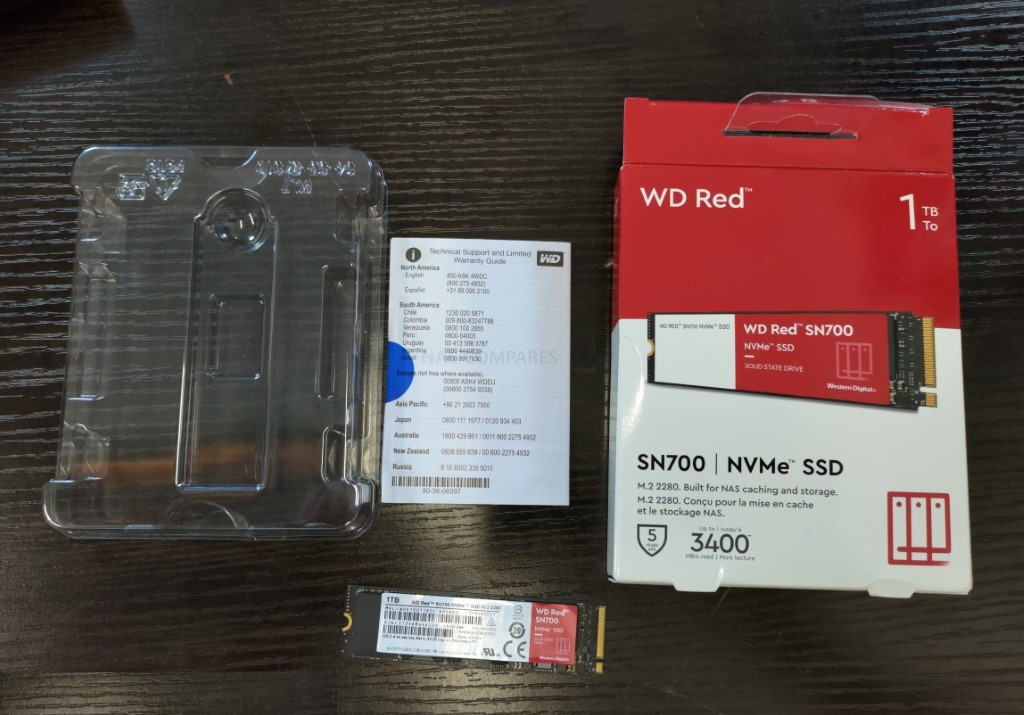
Now, I do genuinely appreciate that they want to avoid waste by including screws that people already have, heat-dissipating accessories that may not fit/be needed and more, but I am surprised they did not even include a thermal heat pad in the retail kit. It’s an incredibly small detail, but if you are installing this for the first time or even replacing an existing SSD with an upgrade to the SN700 NVMe, you are 100% going to need a thermal heat pad and it shouldn’t be assumed that you can re-use your existing one or have one with your heatsink purchase.
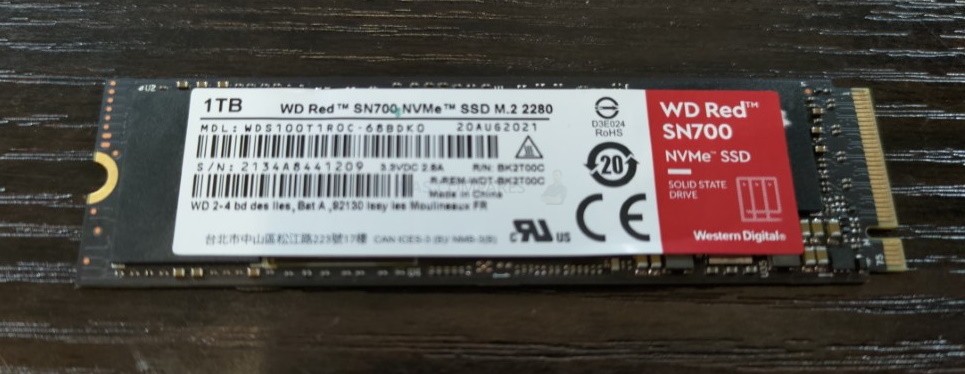
Indeed, with several other WD SSDs (eg the WD Black SN850) arriving with a pre-applied heatsink, I am surprised that the SN700 does not also have a heatsink enabled version as an option. These are very small criticisms and aside from heatsinks only costing you around £10-20, some NAS systems have their own smaller heatsinks you can directly apply to the controller chip etc included (most QNAP’s that have M.2 slots supply these at no additional cost). But that in term just means that this small inclusion has been missed/overlooked and I am a little surprised by that. Let’s take a closer look at the design of the WD Red SN700 and see what you are getting for your cache** in this NAS targetted NVMe SSD.
**No seriously, that is the last one…
WD Red SN700 SSD Review – Design
A closer look at the WD Red SN700 SSD does not really give away too much. The label (no need to remove it when using in a NAS etc) is pretty clear and branded, but that’s what you would expect. The 1TB SSD model featured in this model is a single-sided SSD, but as you graduate into the 2TB and 4TB model, then the NAND quantity and size changes. All five capacities of the WD SN700 series are 2280 in length, which is compatible with at least 95% of NAS systems in 2021/2022 (rare exceptions like the Drobo 5N2 etc) which support 2280 and 22110 length. Though we do need to discuss the elephant in the room a little, which is the fact that this M.2 NVMe SSD is PCIe Gen 3 x4 in architecture.
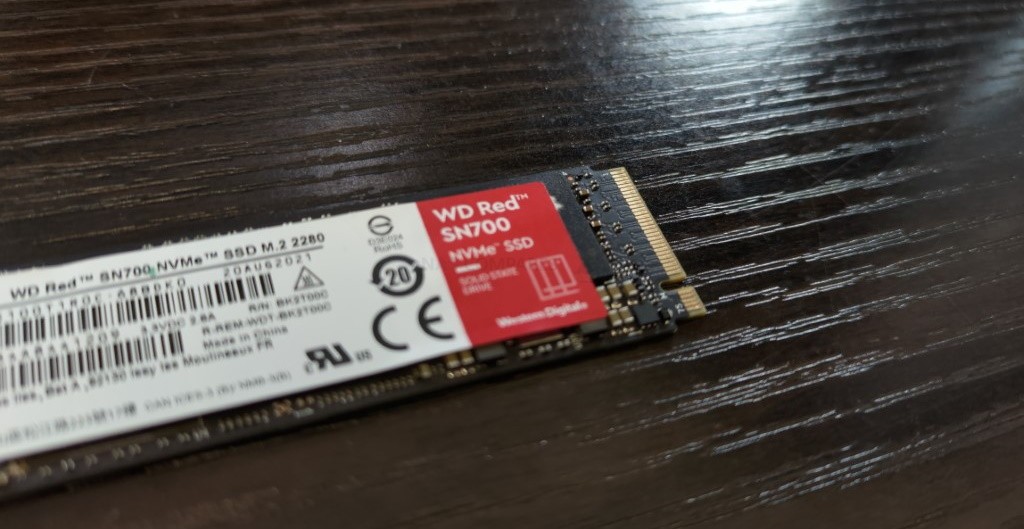
Now the fact the WD Rd SN700 is PCIe Gen 3×4 is a decision that will meet with a mixed reaction. On the one hand, practically all currently available NAS/SAN server systems up to 2021 in both the home and business market that support NVMe M.2 SSD for caching/storage max out on PCIe 3×4 (with many supporting 2×2, 3×1 or 3×2 for reasons of CPU lane restraints and chipsets). Equally, WD has been a little slow on the release of this SSD and likely at early development, PCIe 4 on a NAS system seemed a long way away. However, it can’t be ignored that several high profile NAS releases on the market in mid-late 2021 feature PCIe Gen 4 slots (not m.2), as well as flash systems arriving with U.3 support. Alongside this, their biggest rival Seagate recently launched their Ironwolf 525 PCIe 4×4 NAS SSD, to accompany their existing Ironwolf 510 PCIe 3×4 drive, which may seem overkill, but given the backwards compatibility of PCIe means that these PCIe 4 drives will still work in PCIe 3 settings. Reasons for the WD SN700 being a Gen 3 SSD could be for many reasons, ranging from better pricing, higher durability factors and making sure that product R&D is directed at value right now. Still, this is one of the earlier queries many potential WD Red SN700 buyers will have.
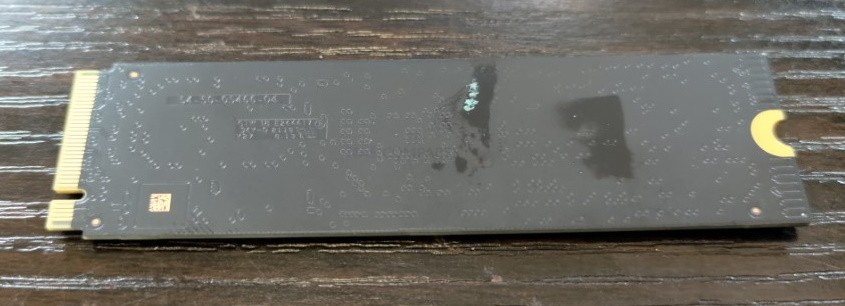
As mentioned, the unit for this review that was supplied by WD is a 1TB single-sided unit (2 units were used in the NAS testing later) and the back is completely clear. Let’s remove that label and take a close look at what this SSD arrives with on-board.
WD Red SN700 SSD Review – Hardware Specifications
As WD generally utilizes only in-house components and manufacturing teams on their drive media, the WD Red SN700 SSD is architecturally similar in parts to several other SSDs in their past/present portfolio, including the WD Blue NVMe and WD Black SN700 before it.
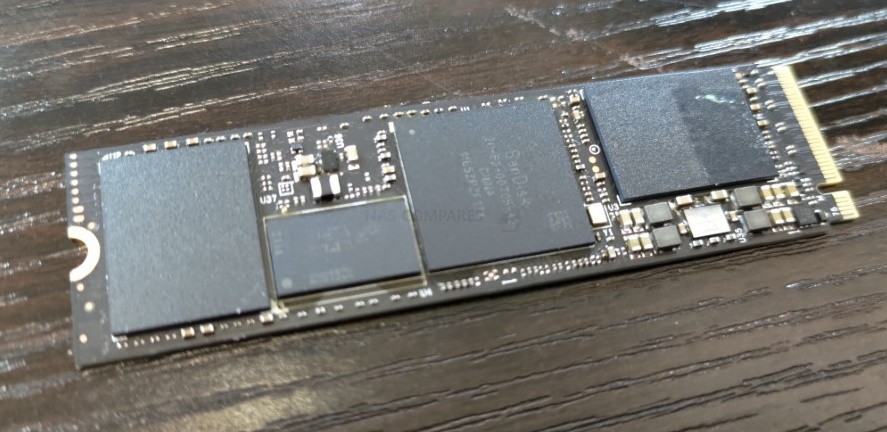
The highlights of the SN700 Hardware Specifications are:
- Available in 250GB-500GB-1TB-2TB-4TB
- WD NVMe Controller
- Onboard DRAM Scaling vs Storage Capacity
- Sandisk 3D TLC NAND
- M.2 2280-S3-M
- PCIe Gen 3 x4 NVMe 1.3
- 1,750,000 MTTF
- 0.7-1.0 DWPD (Capacity Dependant)
- 500-5100TBW (Capacity Dependant)
- 5yr Warranty
All fairly top tier PCIe 3×4 stuff and the durability on the drive is particularly impressive
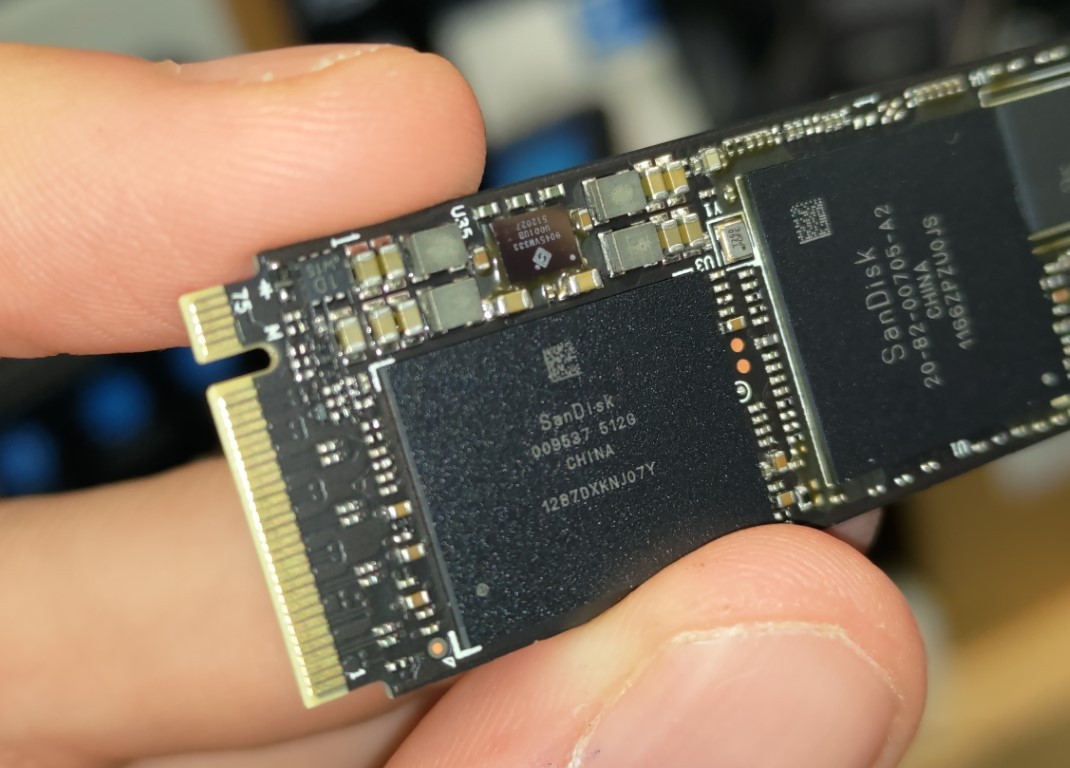
As mentioned, the WD NVMe Controller is of in-house design and has been updated numerous times with tweaks and improvements over the years, resulting in a pretty impressive controller to largely saturate the potential 4,000MB/s of PCIe Gen 3×4, peaking at 3,430MB/s sequential Read and 3,100 Sequential Write (will go into more detail on this in the testing phase of the review below).
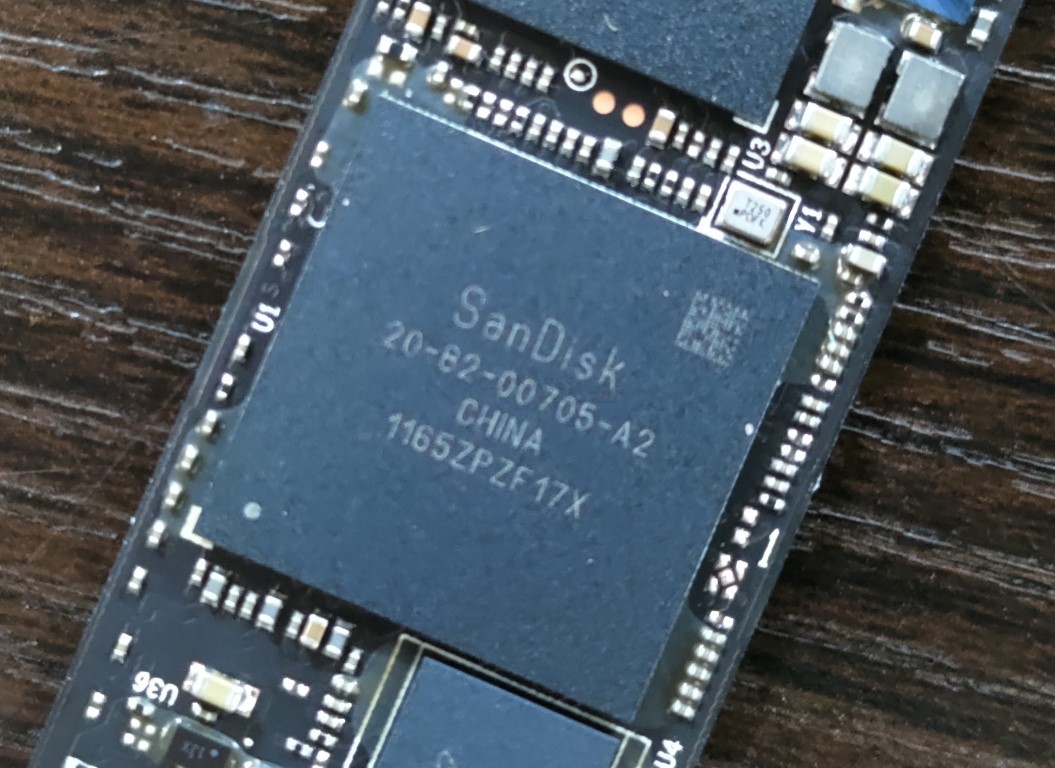
The storage NAND featured on the WD Red SN700 is Sandisk 3D TLC (Sandisk are owned by WD of course) and in the case of this 1TB SSD, there are two 512GB modules, so perhaps a level of over-provisioning there to keep things ticking on smoothly. The DRAM of this SSD scales with the capacity and caps out at a 4GB module for the 4TB model. All fairly standard and mildly predictable stuff. However, as mentioned earlier, the WD Red SN700 is not the only M.2 PCIe 3 x4 SSD on the market and indeed.
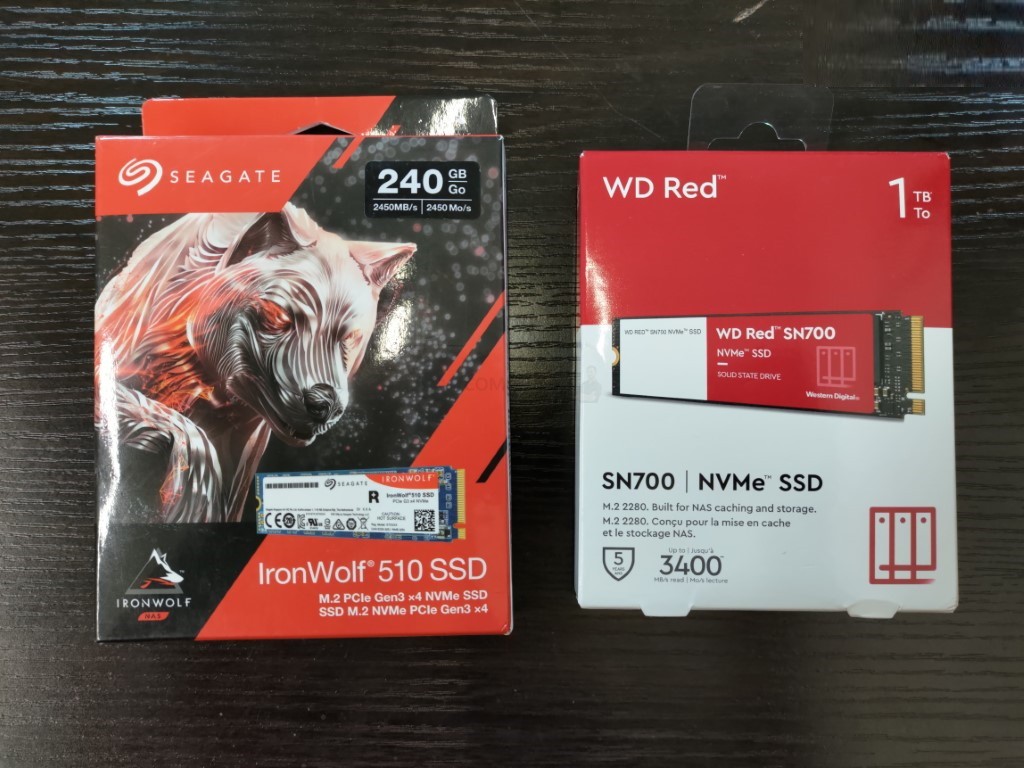
We will have a FULL comparison of the WD Red SN700 SSD versus the Seagate Ironwolf 510 and 525 coming next week, however here is a casual glance at how these two SSDs compare in architecture and Sequential performance for now:
| Specifications | Seagate IronWolf 510
Released March 2020
|
WD Red SN700
Released September 2021
|
| Warranty | 5yr + 3yr Rescue | 5yr |
| MTBF/MTTF | 1800000 | 1750000 |
| PCIe Generation | PCIe Gen 3×4 | PCIe Gen 3×4 |
| NVMe Rev | NVMe 1.3 | NVMe 1.3 |
| NAND | Kioxia BiCS3 64L TLC | Sandisk 3D TLC |
| Controller | PS5012-E12DC | WD NVMe Controller |
| 240/250GB | ZP240NM30011 – $69 | WDS250G1R0C– $64.99 |
| Sequential Read (Max, MB/s), 128 KB | 2,450MB | 3,100MB |
| Sequential Write (Max, MB/s), 128 KB | 290MB | 1,600MB |
| 480/500GB | ZP480NM30011 – $119 | WDS500G1R0C – $79.99 |
| Sequential Read (Max, MB/s), 128 KB | 2,650MB | 3,430MB |
| Sequential Write (Max, MB/s), 128 KB | 600MB | 2,600MB |
| 960/1000GB | ZP960NM30011 – $209 | WDS100G1R0C– $144.99 |
| Sequential Read (Max, MB/s), 128 KB | 3,150MB | 3,430MB |
| Sequential Write (Max, MB/s), 128 KB | 1,000MB | 3,000MB |
| 1920/2000GB | ZP1920NM30011 – $409 | WDS200G1R0C – $289.99 |
| Sequential Read (Max, MB/s), 128 KB | 3,150MB | 3,430MB |
| Sequential Write (Max, MB/s), 128 KB | 850MB | 2,900MB |
| 1920/2000GB | N/A | WDS400G1R0C – $649.99 |
| Sequential Read (Max, MB/s), 128 KB | N/A | 3,430MB |
| Sequential Write (Max, MB/s), 128 KB | N/A | 3,100MB |
So, the big difference here (aside from the capacity difference that is the result of over-provisioning) is the peak write performance. Read performance, which forms a large part of NAS caching, is similar in the higher tiers but the WD Red SN700 holds onto that 3,000MB/s+ benchmark even at 250GB. The Write performance, which is still a big part of caching in write caching where data is committed to the SSD first to increase upload speeds and then moved to the slower HDD RAID array in the NAS, is significantly higher on the WD Red SN700 over the Seagate Ironwolf 510 SSD, despite both drives have very high durability (TBW/DWPD) for server use. So, although WD have taken longer to bring this drive to the market, it is arguably a better drive for it. Though how it compares in deeper comparison of IOPS, 4K, Pools and more will be in our comparison next week. Lets get started benchmarking the WD Red SN700 SSD on our Test Machine, a Synology and a QNAP NAS.
 |
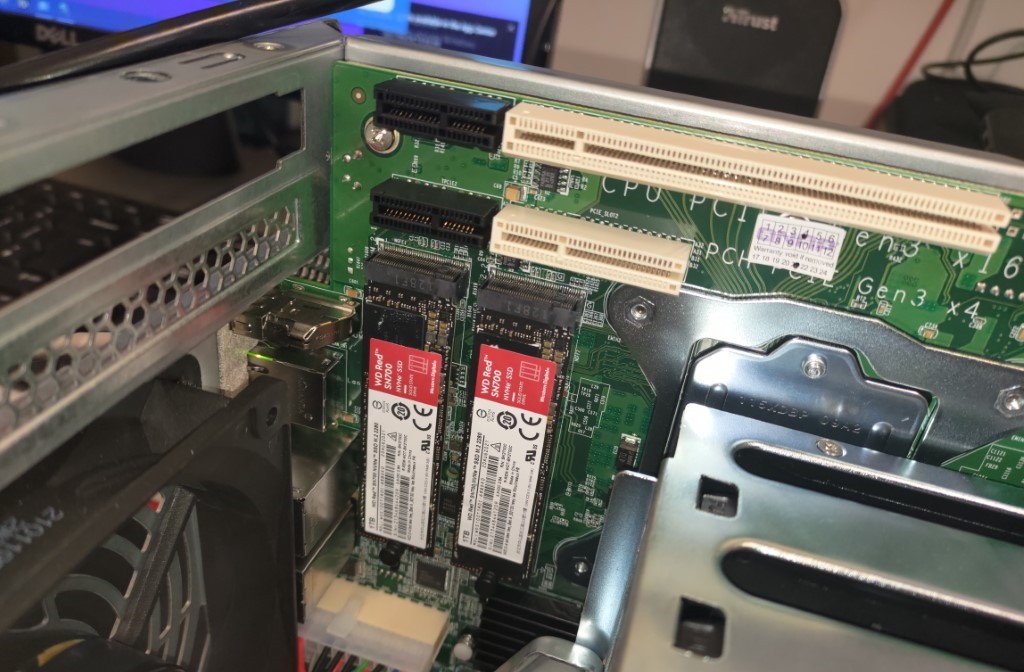 |
Testing of the WD Red SN700 SSD will be broken down into 3 main parts. The first part is testing in a single unit PC benchmark arrangement. The second test is in caching test with a Synology NAS and finally, the 3rd test will be in a QNAP NAS system as an active Storage Pool and iSCSI LUN. In the PC test, the WD Red SN700 NAS NVMe SSD was tested using multiple benchmark tools, from a cold boot, in the 2nd storage slot (i.e not the OS drive). Each test was conducted three times (full details of this are shown in the YouTube Review of the SN700 Red SSD over on NASCompares):
Test Machine:
- Windows 10 Pro Desktop System
- Intel i5 11400 Rocket Lake – 6-Core 2.6/4.4Ghz
- 16GB DDR4 2666MHz Memory
- Intel B560M mATX Motherboard
- OS Storage, Seagate Firecuda 120 SSD
- Test SSD connected to Secondary PCIe Gen 4×4 M.2 Slot
Using CrystalDisk, we got a good measure of the drive and verified that this PCIe Gen 3 x4 SSD was indeed using the 4×4 lane. Additionally, the temp averaged out around 44 between each test being conducted.
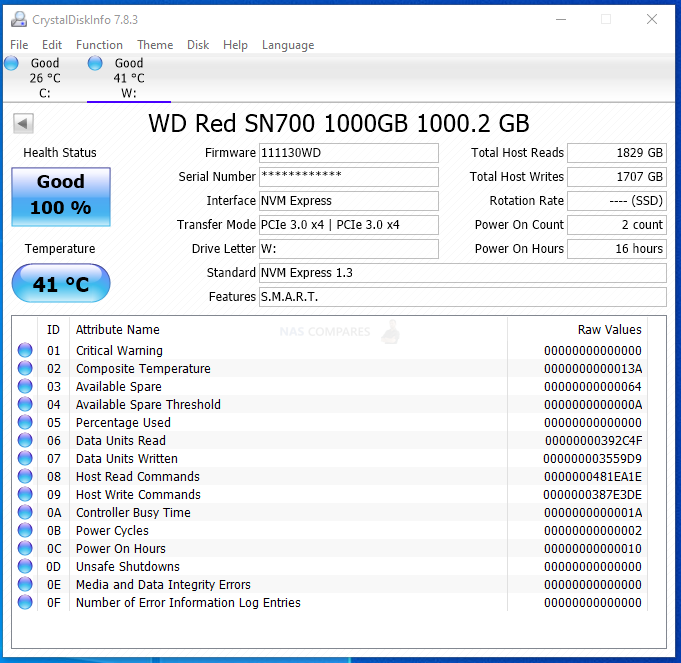
The first tests were conducted using the ATTO disk benchmark software. The first was a 256MB test file size and below is a breakdown of the transfer rates and IOPS. The 2nd Test was a 1GB test file and finally, the last test was with a 4GB test file. The system was given 1-minute cool downtime between tests, no screen recording software was used (remove overhead) and a heatsink was used throughout (no reboots)
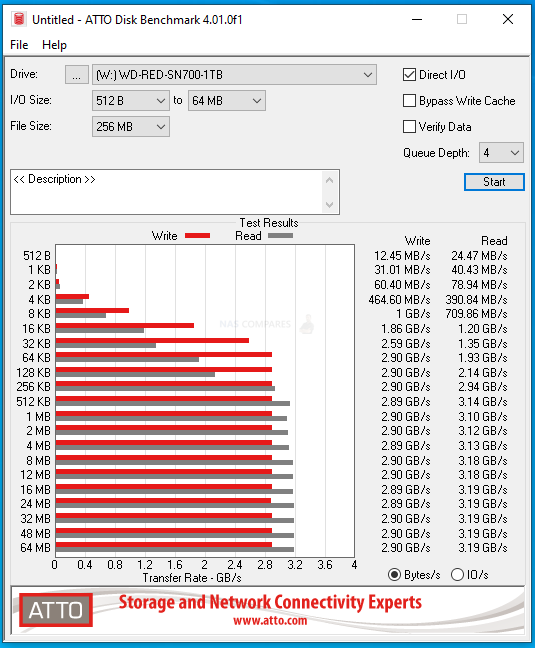 |
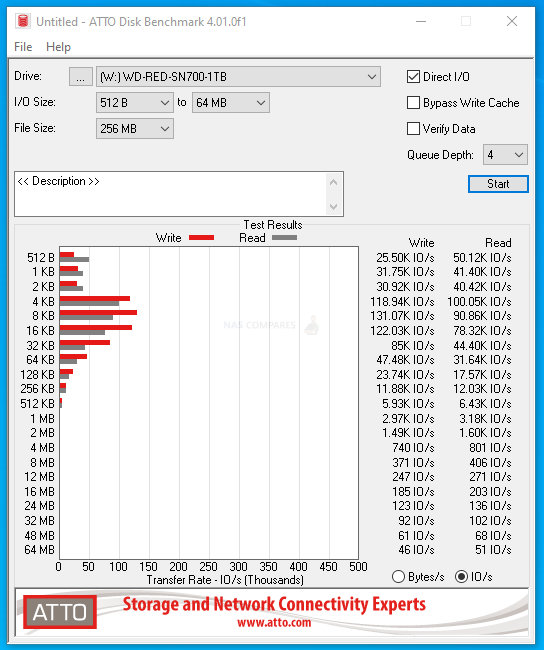 |
ATTO Disk Benchmark Test #1
256MB File PEAK Read Throughput = 3.19GB/s
256MB File PEAK Write Throughput = 2.90GB/s
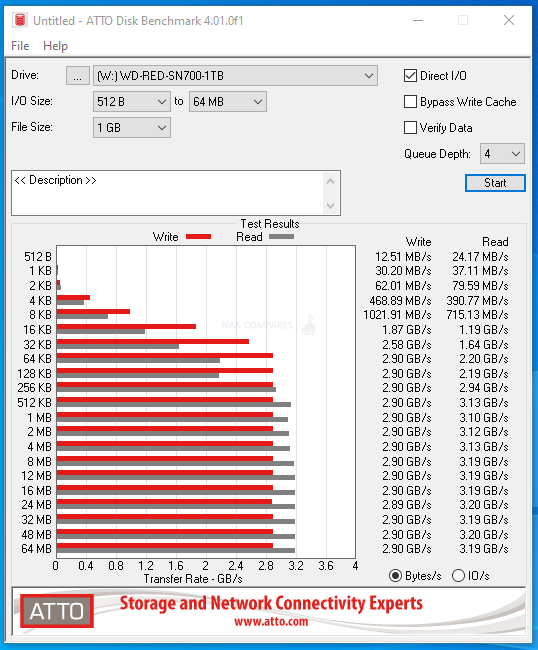 |
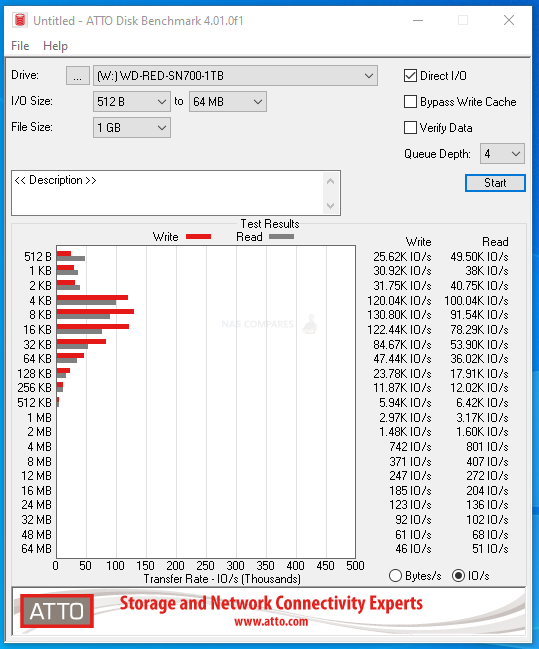 |
ATTO Disk Benchmark Test #2
1GB File PEAK Read Throughput = 3.20GB/s
1GB File PEAK Write Throughput = 2.90GB/s
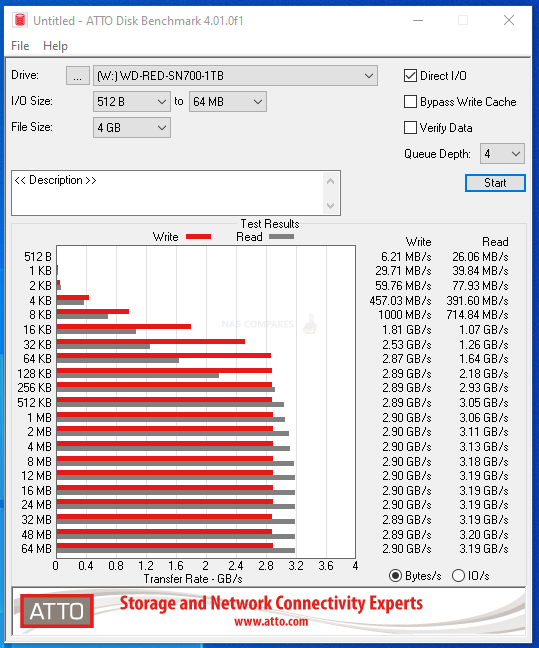 |
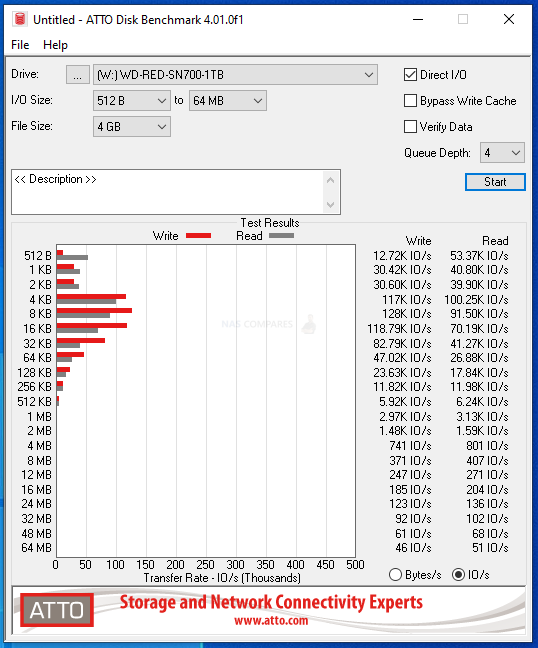 |
ATTO Disk Benchmark Test #3
4GB File PEAK Read Throughput = 3.20GB/s
4GB File PEAK Write Throughput = 2.90GB/s
Next, although the ATTO tests were quite good, but not what I would have hoped from this SSD, so I moved on to the Crystal Disk Mark testing to see how well it would handle our lasts barrage of tests. The first test was the 1GB file testing, which measured both sequential and random, as well as the read and write IOPS. Test were conducted on a 1GB, 4GB and 16GB Test File. I also included a mixed 70/30 read and write task to give a little bit more of a realistic balanced workload. These tests were conducted with 1-minute cooling break in between
CRYSTALDISK MARK 1GB TEST
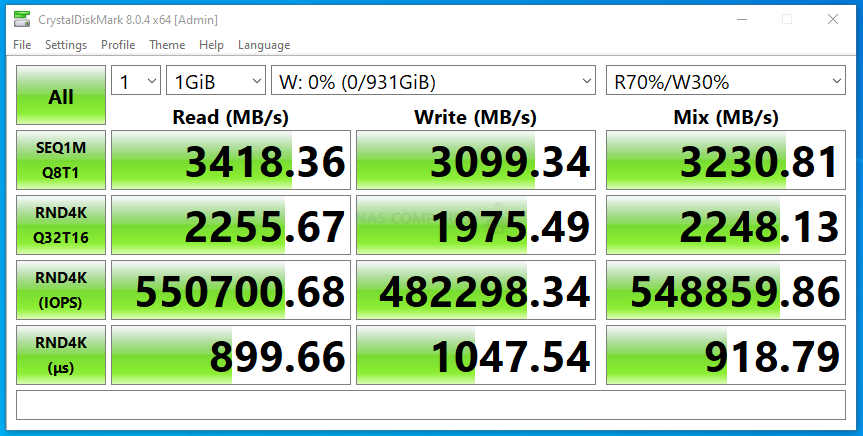
CRYSTALDISK MARK 4GB TEST
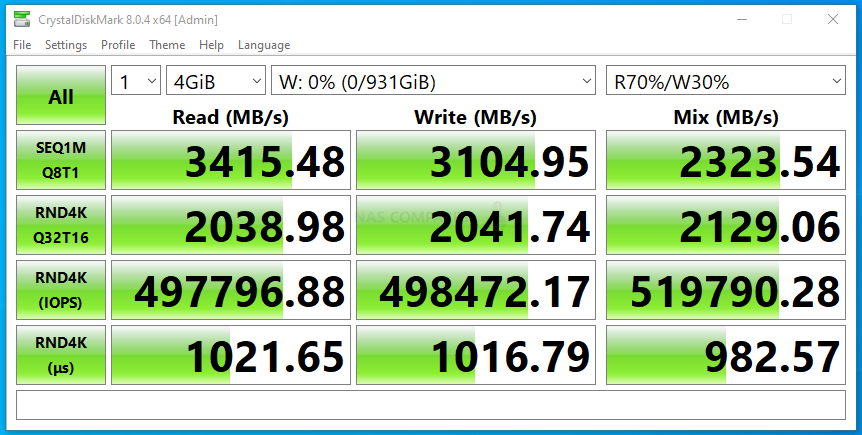
CRYSTALDISK MARK 16GB TEST
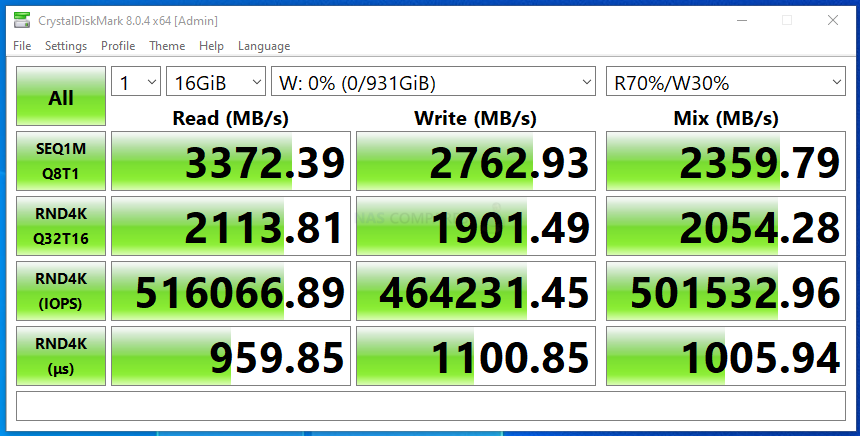
Next, I switched to AS SSD benchmark. A much more thorough test through, I used 1GB, 3GB and 5GB test files. Each test includes throughput benchmarks and IOPS that are respective to the larger file sizes (important, if you are reading this and trying to compare against the reported 4K IOPS from the manufacturer).
AS SSD Benchmark Test #1
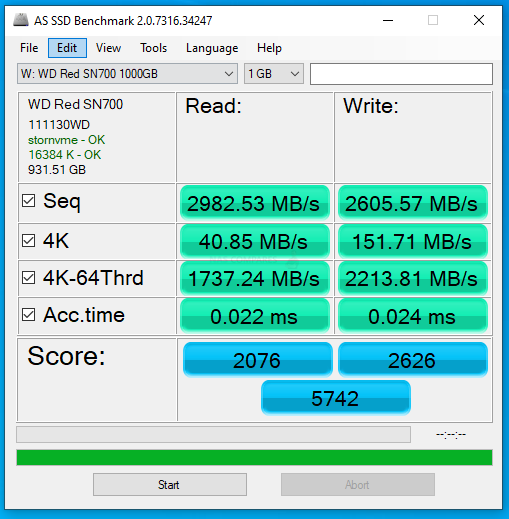 |
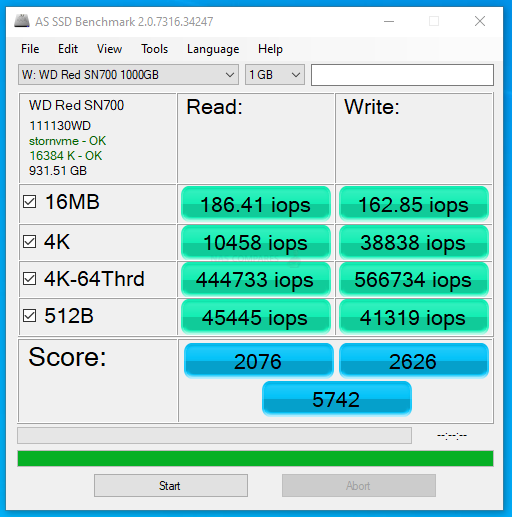 |
AS SSD Benchmark Test #2
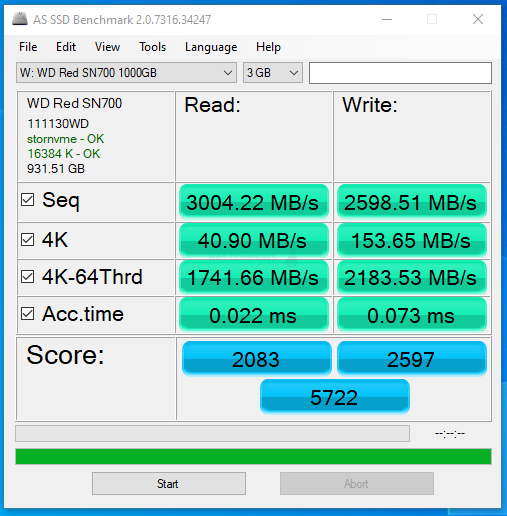 |
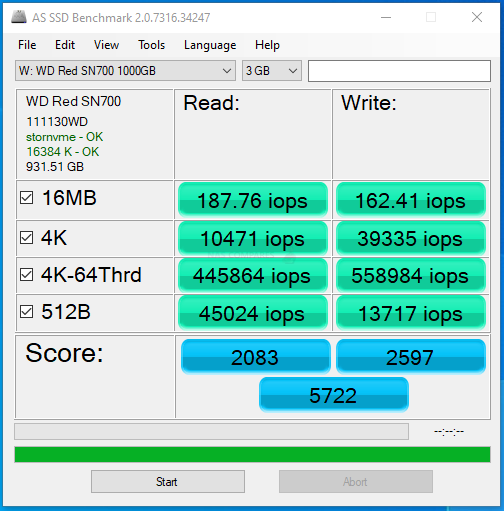 |
AS SSD Benchmark Test #3
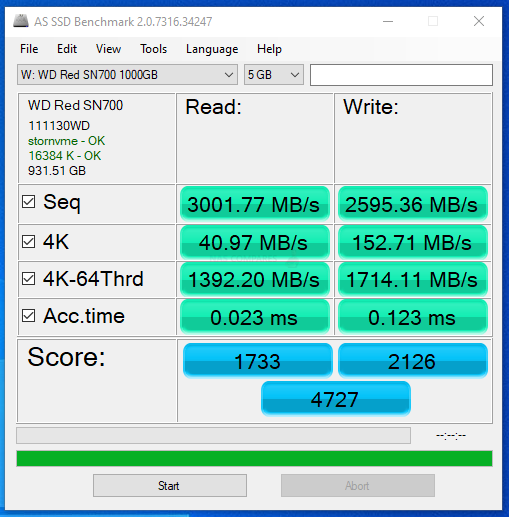 |
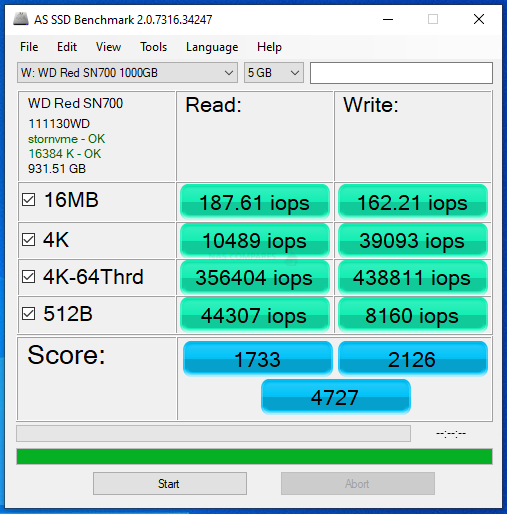 |
Ordinarily, I would introduce tests like BlackMagic and AJA into the mix here, but even a short burst of testing on an NVMe like this would over saturate the cache memory on board. Nevertheless, in the short term we still could ascertain the reported performance on 1GB, 4GB and 16GB file testing was:
1GB AJA File Test Results (Peak) = 3123MB/s Read & 2904MB/s Write

4GB AJA File Test Results (Peak) = 3121MB/s Read & 2911MB/s Write

16GB AJA File Test Results (Peak) = 3119MB/s Read & 2900MB/s Write

Synology NAS Drive and WD Red SN700 SSD Caching Tests
This test was conducted over a 1Gbe connection, on the DS1621+ NAS, in conjunction with two Synology HAT5400 NAS hard drives (for clarity from a full WD Red Environment). a 1TB iSCSI LUN was created on the HDD RAID array and multiple tests with a large Windows File transfer, ATTO DiskBenchmark and AS SSD was conducted in a NON-CACHE and CACHE environment, with the latter featuring the WD Red SN700 SSDs (2x 1TB in a Read and Write Cache environment). Throughput and IOPS were measured for both and compared below:
(Click to Enlarge)
(Click to Enlarge)
There were very clear improvements in almost all cases of using the WD Red SN700 for caching in the Synology system. Especially in write-cache areas (expected).
QNAP NAS Drive and WD Red SN700 SSD Caching Tests
In The QNAP NAS test, a TVS-872X was used and a 10Gbe shared network was used on a 10Gbe equipped machine. The WD Red SN700 SSD (2x 1TB) were placed in a RAID 1 environment as a storage pool/volume, then a 700GB iSCSI LUN was created and data was directly tested on ATTO DiskBenchmark and AJA Speed Test. NOTE – Test speeds could not full saturate the 10Gbe connection due to the PCIe 3×1 slots of the TVS-872X, a well as the iSCSI LUN being proportional to the capacity of the drive (done intentionally). Measurements for Throughput and IOPS were made. See below:
(Click to Enlarge)
(Click to Enlarge)
Performance differences were suitably restrained for this setup (a larger test of this SSD on a ZFS QNAP System is coming shortly featuring the WD Red SN700 and Seagate Ironwolf 510 (as well as the Ironwolf 525 if I can get that added in time!), hence why QNAP testing in this review is much shorter and in an unusual fashion. Nevertheless, the results were clear well within expected parameters and positive. Overall, the WD Red SN700 NAS SSD was certainly able to provide some solid performance, as well as potentially exceed the test figures here on a more powerful machine. Given the reported Read and Write statistics that the brand has stated publically, I think there is enough evidence here to back up those claims. IOPs were a little lower than I expected, but again, we were testing very large file types, so this would have to be taken in context and these drives are made with NAS/cache use in mind.
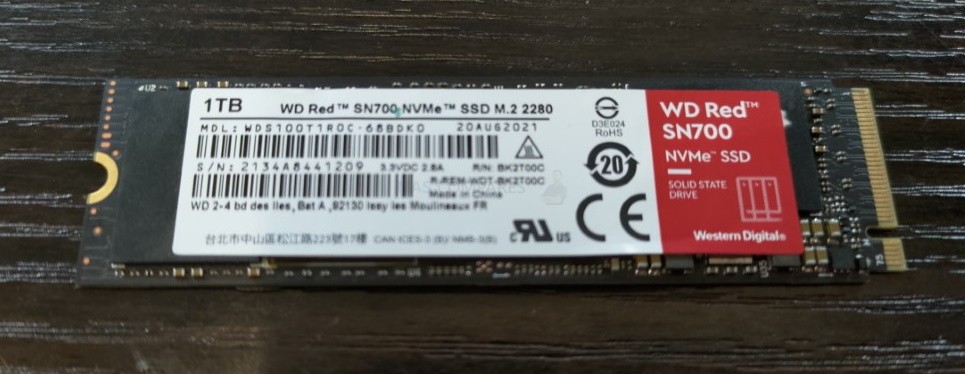
WD Red SN700 SSD Review – Conclusion & Verdict
There is a lot to like about the WD Red SN700 SSD. For a start, this is clearly one of the highest endurance SSDs available in their current home/SMB lineup of drives at 0.7-1.0DWPD (capacity dependant) and if you are looking for an SSD for your Synology or QNAP system as an area of write-enabled cache (or Read/Write), then you are definitely going to feel better about that lifespan. Equally, I like that WD has gone into this with a broad range of capacities to complement the varying degrees of storage potential in the average user (even 2-Bay NAS like the DS720+ or TS-251D have PCIe/M.2 expandability available by default), from as little as 250GB and all the way up to 4TB on that petite little M.2! Even when we pushed the drive in both standalone benchmarks in our test machine and in both Synology/QNAP NAS usage for caching and storage pools, the drive maintained expected performance and higher in every test. In direct comparison with it’s most comparable PCIe3 drive from competitor Seagate, the Ironwolf 510 SSD for NAS, the WD Red SN700 is a clearly higher-performing drive in read, write, durability and 4K IOPS (though the Ironwolf does have an inclusive 3-year data recovery services – a bit questionable in utility for cache recovery though). I do question the somewhat delayed arrival of a PCIe Gen 3×4 SSD for NAS as the move towards PCIe Gen 4 in NAS is starting in development, as well as the price point of this drive for NAS seemingly ignoring this transition. But if you are looking to add cache to your NAS in 2021 (as well as scaling up random performance or your storage pools in an older system), then the WD Red SN700 SSD is a solid choice and does exactly the things they claim.
| PROs of the WD Red SN700 SSDs | CONs of the WD Red SN700 SSDs |
| Good range of capacities to scale
High durability to withstand constant data recycling as cache data refreshes over time Not limited to Cache only use if the NAS/Server allows pools and volumes Good IOPS rating Come out the winner over the Seagate Ironwolf 510 PCIe3 NAS SSD in almost all specs |
A little Pricey for a Gen 3×4 drive in 2021/2022
A pinch overshadowed by the Seagate Ironwolf 525 at PCIe Gen4 released days apart |
🔒 Join Inner Circle
Get an alert every time something gets added to this specific article!
This description contains links to Amazon. These links will take you to some of the products mentioned in today's content. As an Amazon Associate, I earn from qualifying purchases. Visit the NASCompares Deal Finder to find the best place to buy this device in your region, based on Service, Support and Reputation - Just Search for your NAS Drive in the Box Below
Need Advice on Data Storage from an Expert?
Finally, for free advice about your setup, just leave a message in the comments below here at NASCompares.com and we will get back to you. Need Help?
Where possible (and where appropriate) please provide as much information about your requirements, as then I can arrange the best answer and solution to your needs. Do not worry about your e-mail address being required, it will NOT be used in a mailing list and will NOT be used in any way other than to respond to your enquiry.
Need Help?
Where possible (and where appropriate) please provide as much information about your requirements, as then I can arrange the best answer and solution to your needs. Do not worry about your e-mail address being required, it will NOT be used in a mailing list and will NOT be used in any way other than to respond to your enquiry.

|
 |
Beelink ME Pro NAS Revealed
Best SOLID STORAGE NAS of 2025
Should You Worry About the NanoKVM Hidden Microphone?
Best Cheap NAS of 2025
Minisforum MS-02 Ultra - WHO IS THIS FOR??? (The First 48HRs)
Why People Use TrueNAS, UnRAID and Proxmox to Turnkey NAS (Synology, QNAP, etc)
Access content via Patreon or KO-FI





Discover more from NAS Compares
Subscribe to get the latest posts sent to your email.


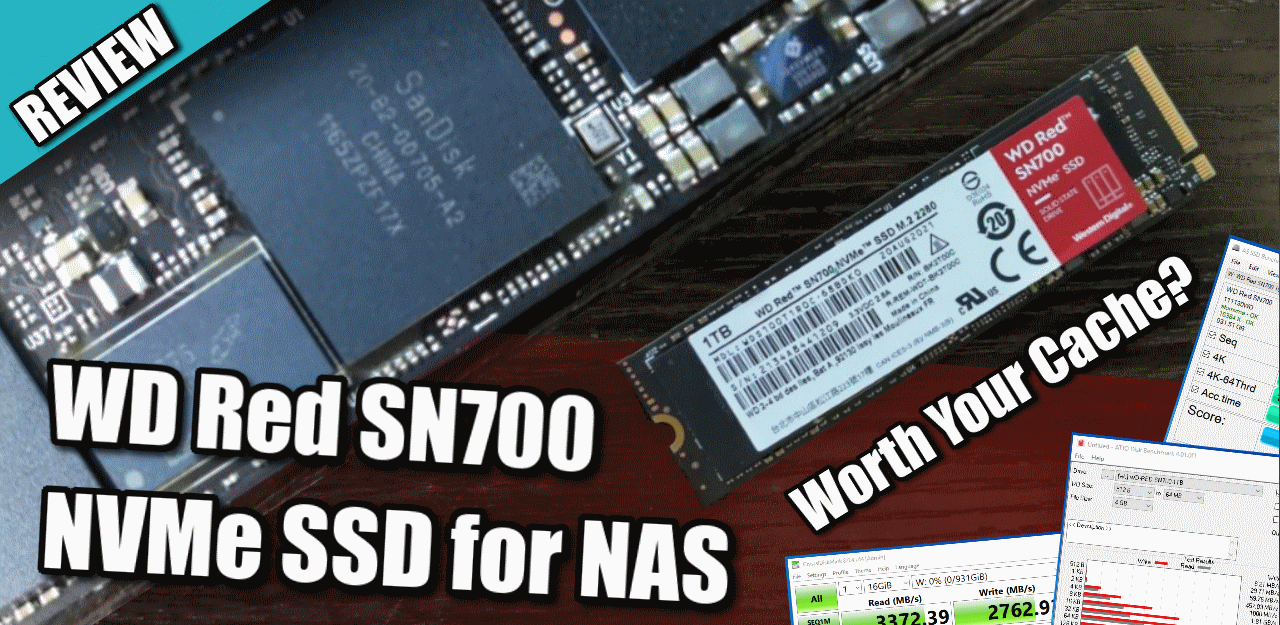


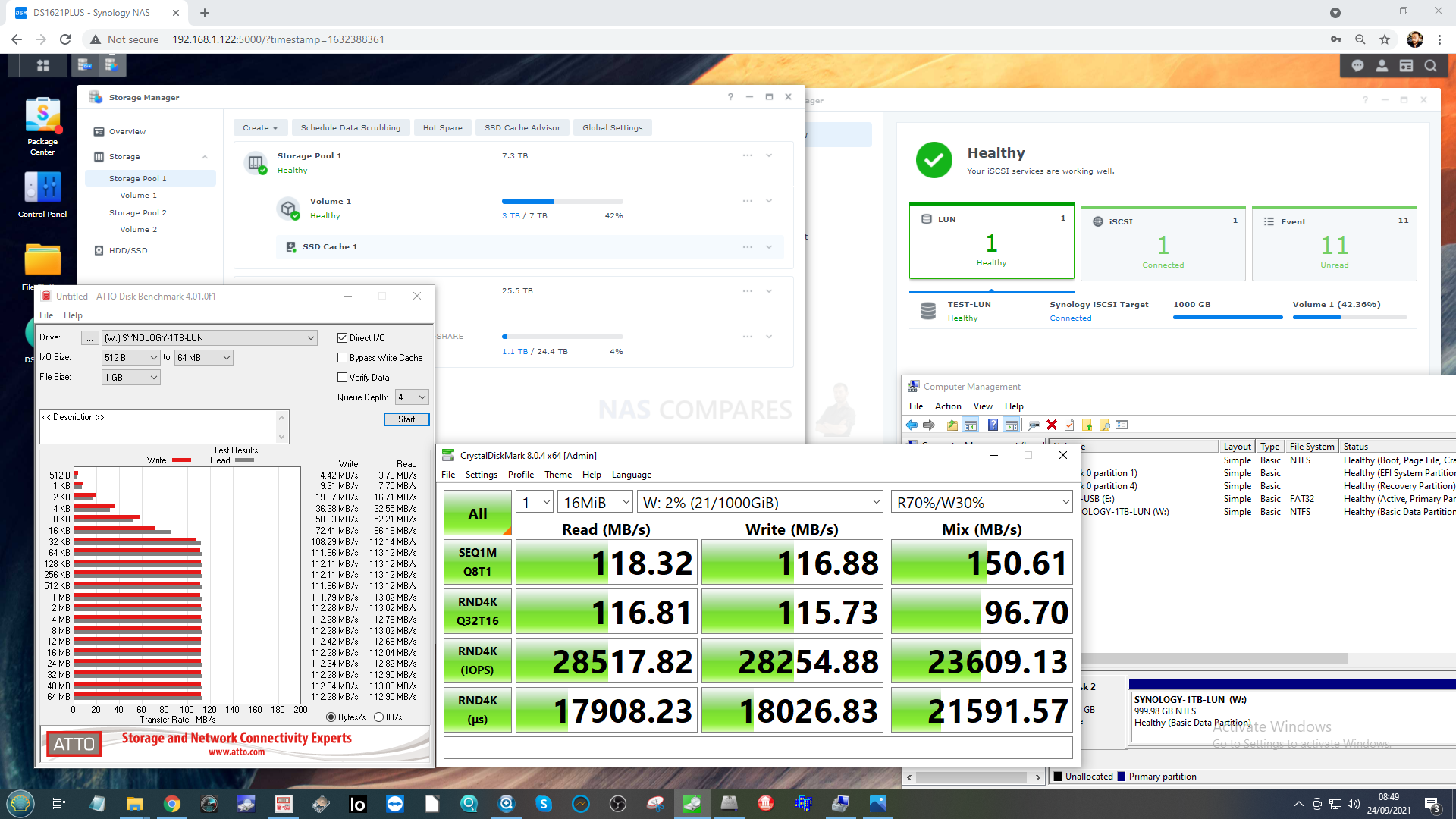

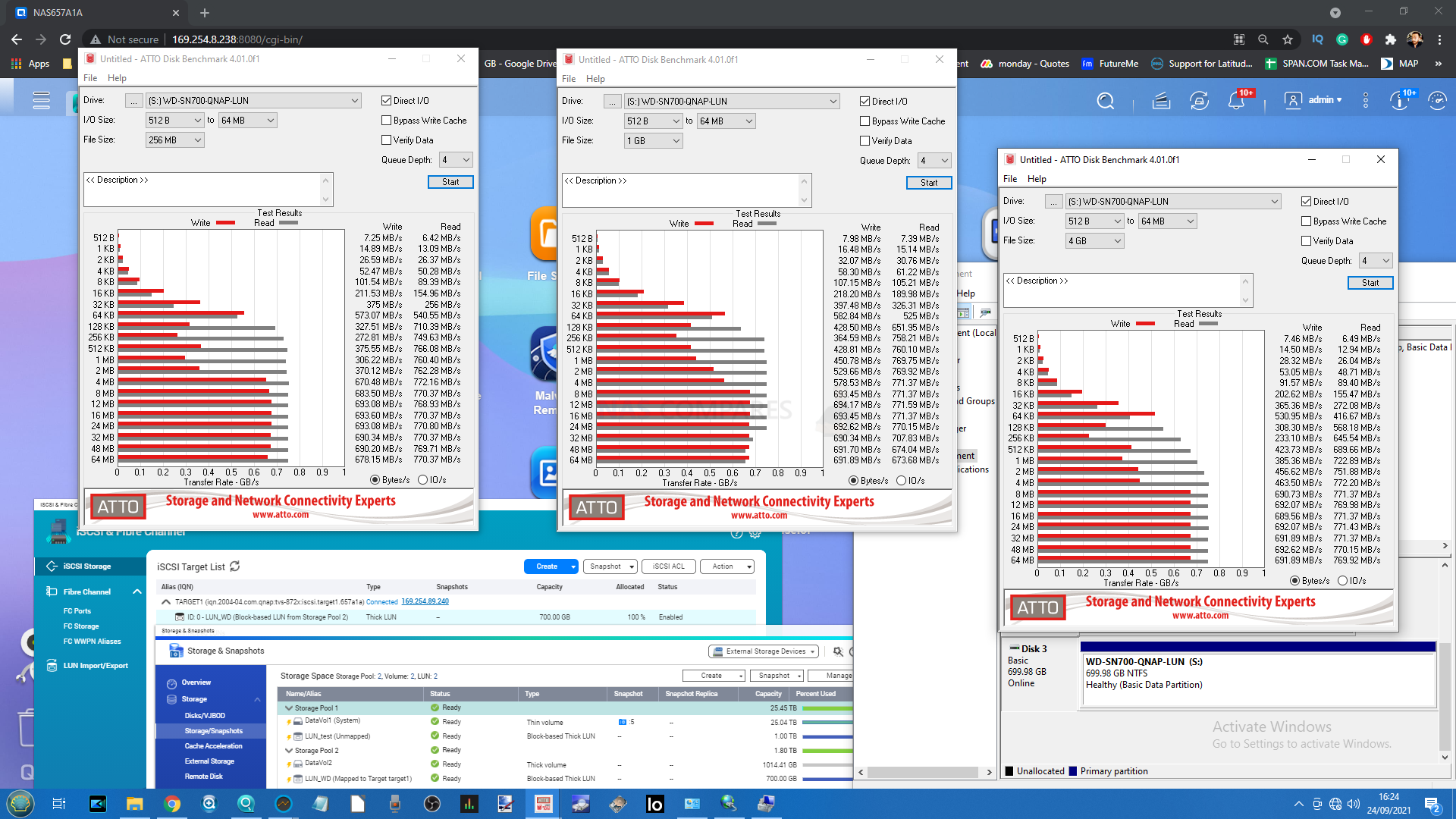
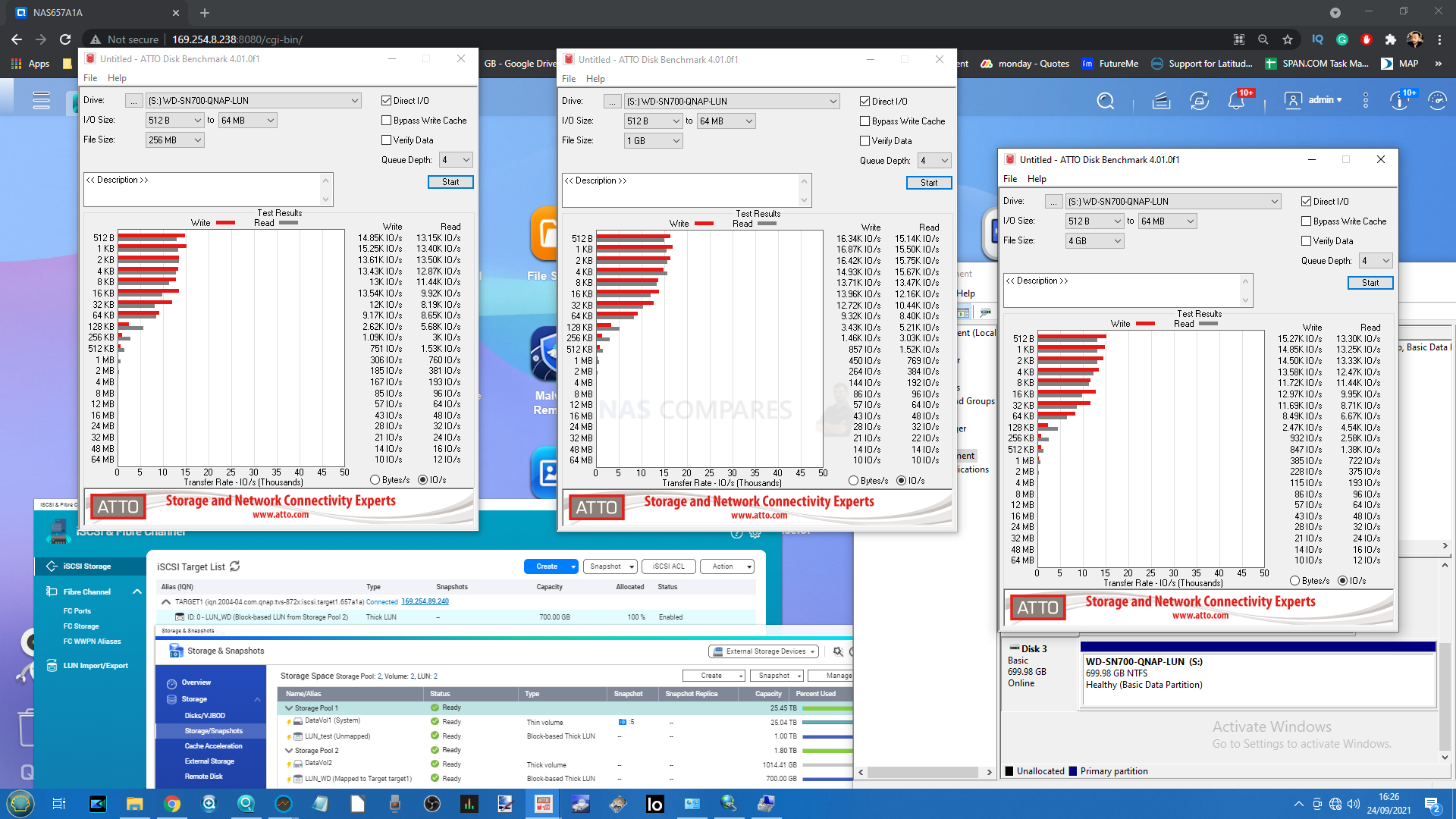




Search Google for “synology+sn700” and read the Synology blog post!
REPLY ON YOUTUBE
Do you still own one? If yes could you run a simple lsblk -t command and inform me about the physical / logical sector size. Even though these 2 specs are virtual since nvmes use pages, I still that info for mirroring this drive with a different one I already own and this info is crucial for me. Thank you.
REPLY ON YOUTUBE
Bought a WD red m.2 2280 500gb and it’s not showing up or initializing at all even in disk management
REPLY ON YOUTUBE
DO NOT USE SANDISK! After their split from WD they are a JOKE.
They do NOT HONOR their own warranty policy. They state they will replace a FAULTY SSD with either a new, or refurbished device, yet they claim they have NO STOCK, so will ONLY REFUND your payment.
They are available for sale online though, so there is STOCK. Management just will NOT authorize doing the RIGHT THING by the CUSTOMER, so SCREW THEM back.
Well SSD prices have GONE UP now. That means I PAY MORE because their device FAILED.
AVOID SANDISK. They are NOT worthy of anyone business anymore!
REPLY ON YOUTUBE
Would you recommend using these on an F8 ssd plus? Since those newer all ssd nas would be using it for storage and not so much for cache? Or would something like the sn5000 would be just fine?
REPLY ON YOUTUBE
I installed 2 brand new SN700s in my Synology DS1621xs+, and just 3 months later, my SSD’s estimated endurance has reached its limit. According to Synology support, these M.2 drives use a different method to gather endurance data compared to the models supported by Synology. This is why they are not on the compatibility list for the DS1621xs+. The cache stops working when the endurance limit is reached with Synology.
REPLY ON YOUTUBE
What are the pros & cons of not mirroring the nvme cache?
Thinking of using 18 tb hdds to building a 8-disks nas media server with 2 as parity disks.
With the eventual usable capacity of 108TB, what would be the recommended size of nvme cache? And should it be set to Read only or read/write?
REPLY ON YOUTUBE
What are the risks/disadvantage of not mirroring the cache?
What are the pros & cons of read-write vs just read?
REPLY ON YOUTUBE
Gen 3 drives don’t require a heat sink gen 4 it depends gen 5 absolutely is required that’s why they don’t make a model with a heat sink
REPLY ON YOUTUBE
I love the color schemes
Red: NAS
Blue: average
Black: performance
Purple: server/camera
REPLY ON YOUTUBE
Absolutely love your content, even 1yr later. Thank you for making these.
REPLY ON YOUTUBE
You know red is all about love ????
REPLY ON YOUTUBE
volume to low
REPLY ON YOUTUBE
Any idea where the controller chip is? I’ve just brought two 1TB WD Red SN700 NVMe for my QNAP.
Why do you need to find it?
To place a heatsink on it
In the middle (see the photo at the bottom of https://hexus.net/tech/reviews/storage/148435-wd-red-sn700-ssd-1tb/, according to the review the controller is labeled SanDisk 20-82-000705-A2 there).
Yes, WD owns Sandisk. This may explain why they use this controller.
Thanks, WD support confirmed it too.
I’m looking at this drive as my secondary disk in my laptop.. not for my operating system but as me secondary also to put vm’s on.. I use the Samsung 970 pro for my os. That’s a mlc drive. The 2tb one is a nice bulk storage way better then the evo. And my laptop doesn’t support gen4 so don’t need it.. still thinking about it any tips are welcome
REPLY ON YOUTUBE
Any recommendations for m.2 heatsinks that fit in synology NAS? I have a DS720+
REPLY ON YOUTUBE
The WD Red is not listed in the synology compatibility list, anyone a guess why or tested if it works without any problems? I have a 720+ and would love to get the 500GB SSD version
REPLY ON YOUTUBE
any reason why you shouldnt use the wd red as a system drive for windows on a computer? thinking of ordering one, since these are rated for 1Petabyte TBW and my current PNY drive is already down to 82 due to having only 170TB TBW and i looking for something to slap in, and not care about it for the next 5-10 year to run windows and windows software on it
REPLY ON YOUTUBE
The time has come – I need a new 4TB hard drive and, after a day’s worth of research, this one is my pick.
*TL;DR* before I go into the details: I intend to use the 4TB version of this SSD for gaming; hopefully for the next 20 or so years.
Basically, while I still have my old 4TB WD Blue HDD and it works just fine, I need a new hard drive in order to move my entire Win 7 setup to a Linux VM.
Now, personally, as a life-long gamer (20+ years now), I value long-term hardware viability and consistency much more than extreme benchmark speeds. In that context, I think the 4TB version of the WD Red SN700 NVMe SSD is perhaps as close to an ideal hard drive as I can get at a medium budget.
Case and point, given the massive 5100 TBW this SSD offers, in a daily gaming context (mind you, I regularly play much older games), this SSD might actually last the fabled 20 years that the raw numbers indicate SSDs could, theoretically, attain.
With a lifetime of 20 potential years vs. the median of 6 years for HDDs (I’ve had over a dozen and that number seems about right from my experience) and considering current prices (Q3 2022, EU), I’ve calculated that I’d be paying ~190 EUR to multiply my current read/write speeds by 18x! Mind you, my old HDD maxes out at 180 read/write and has served me well for the past 4 years; thus, 18x should be more than enough for a long, long time.
While, yes, the initial cost is about 4.5x to 5x more than a new 4TB WD Blue HDD (that I know from experience work just fine), the likelihood that it will last 3.3x as long in addition to giving me 18x read/write speeds, in my mind makes this a very worth-while long-term purchase, for my particular use case.
The new 4TB SSD would also allow me to use my old 4TB HDD as backup storage; adding another layer or long-term security and peace of mind to my setup. The more I analize this setup, the more I like it! ^_^
PS: As far as I can tell, the only SSD that’s competitive with the WD Red NVMe for what I have in mind (i.e. 4TB SSD with 3k+ read/write, focused on TBW and mid-range price) is the Corsair Force MP510 4TB SSD. The Corsair is ~25% more expensive, but offers ~34% better TBW, with slightly higher random read/write speeds – in other words, it currently costs about 140 more EUR to get that 8-9% better long-term price/performance ratio. Personally, I think I’m sticking with the WD offer, but my brand loyalty is probably starting to weigh in at this point (that, and my budget).
Hopefully this was an interesting read for someone – perhaps, should I be so bold, even useful.
Cheers from Transylvania.
REPLY ON YOUTUBE
Just bought a 500GB model for my Linux OS drive and to run my VM files … Will I need to fit a heatsink?
REPLY ON YOUTUBE
No point having a data transfer rate in a NAS drive faster than the network it’s attached to.
REPLY ON YOUTUBE
Those are some real nice sustained write speeds. Especially for the price and life expectancy of the device. Thanks for the video.
REPLY ON YOUTUBE
Does it have dram buffer??
REPLY ON YOUTUBE
Give me more RAM anyday. It is faster than any NVMe drive, and last 10 times longer and does not overheat.
REPLY ON YOUTUBE
Hello!
Is it possible to use it on a desktop normally to manage a database?
REPLY ON YOUTUBE
Dumb question could the 4tb model be used in a laptop as storage only or as main drive also.
REPLY ON YOUTUBE
Great video, thank you for sharing this knowledge and review.
REPLY ON YOUTUBE
hi, thanks for this great video, can i use it on my pr4100 wd cloud?
REPLY ON YOUTUBE
I put these in my DS920+ and now plex cant seem to play movies that are 17GB and above. This wasn’t an issue with the SN550 drives. Can you try and reproduce this?
REPLY ON YOUTUBE
Need a recommendation for caching. I have 2x NVME installed in my DSM7. Should I enable read or read/write? I have 2x14tb HDD installed. Planning to install a 3rd one.
REPLY ON YOUTUBE
Thanks a lot for the very detailed analysis. My use case is storing large 3DStudio Max files (>1GB) onto the NAS. It auto-saves every 10 min. Hence writing. Would cache help there? Does it write onto cache first, then HDD? If so I think would be of great help, just want to confirm the behavior please. Many thanks in advance! Was great finding your channel.
REPLY ON YOUTUBE
10:30 – did you just tell us we need heatsinks on our NVME SSDs in our NASs and we should use the Synology heatsinks that came with the NAS? I must have tossed mine. But seriously, and I know this is about the new WD Red, but do you have a recommendation for Samsung 970s on the DS920+?
REPLY ON YOUTUBE
I got some old SATA SSDs as read cache in my NAS but I do plan on picking up a pair of NVMEs for read/write cache once I wear out the SATA SSDs or there are good black Friday deals for these Nas-specific NVME SSDs, whichever comes first.
REPLY ON YOUTUBE
Maybe I’m just blind or glossing over it repeatedly but where are the actual NOCACHE baseline results for
the Synology and the QNAP ?
Thank you so much for diving into the complexities on this issue. I appreciate your candor when going through the details with enough depth to cover everything, but not so much technical jargon to leave me behind. Keep up the fine work.
REPLY ON YOUTUBE
I bought the samsung ssd after your video but still enjoy every ssd video you do. Thank you
REPLY ON YOUTUBE
Hello
REPLY ON YOUTUBE
If you make a video about the change in performance using this for an L2ARC for read cache workloads in TrueNAS, I would enjoy watching it. Specifically, I’d be interested to know if it improves throughput noticeably if you wanted to edit videos directly off a 10G enabled NAS versus just using RAM (normal). I’d also be interested to see 1MB recordsize for the videos folder to see if that reduces memory pressure to use the drive as a cache.
REPLY ON YOUTUBE
For those that need it, here is the chapters on this video.
00:00 – Introduction, Why NAS Based SSDs?
07:45 – Unboxing
09:00 – Discussing the Specs
16:05 – PC Benchmarks
22:10 – Synology NAS Cache Tests
26:25 – QNAP Pool Tests
29:15 – Conclusion & Verdict
REPLY ON YOUTUBE